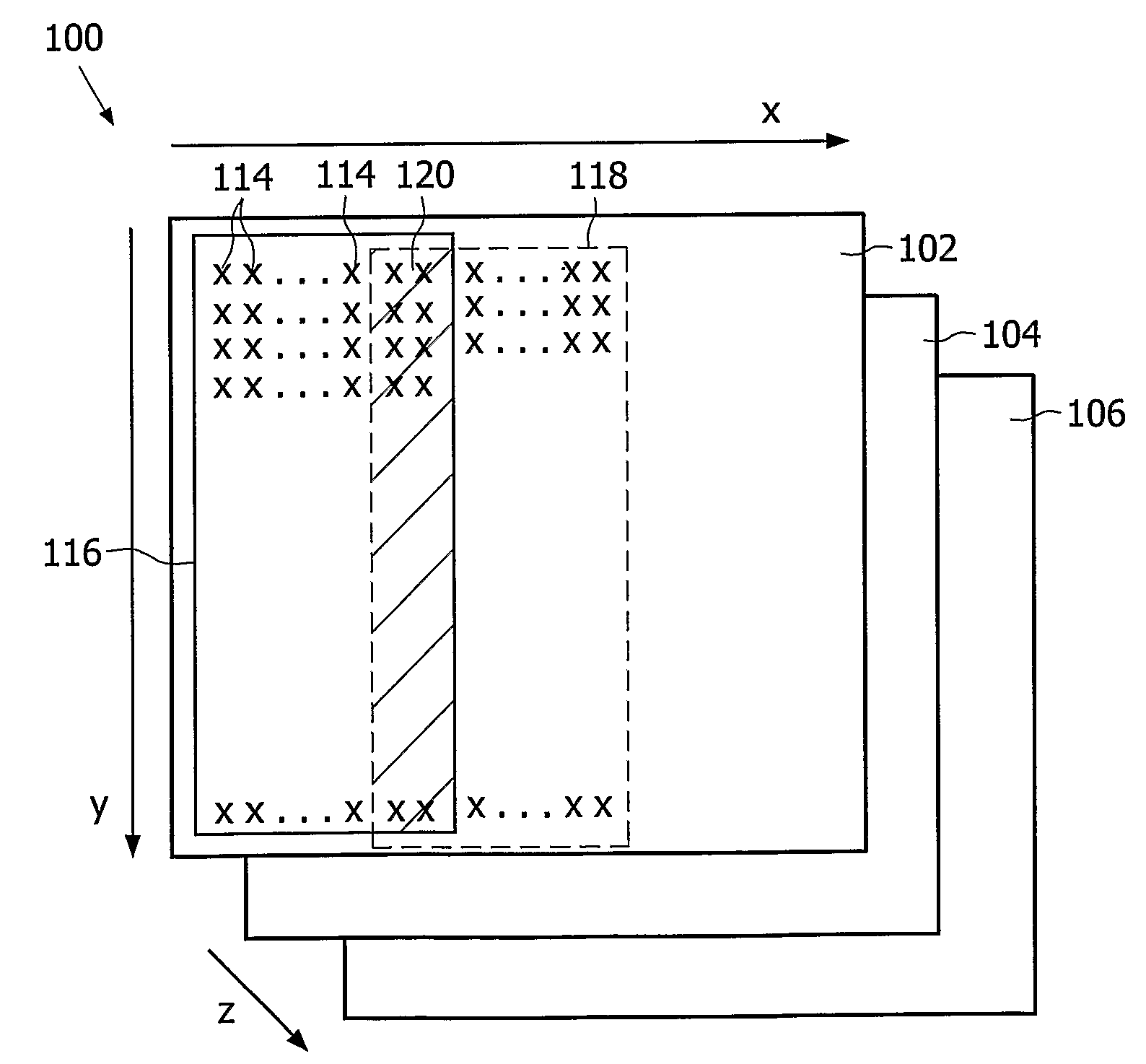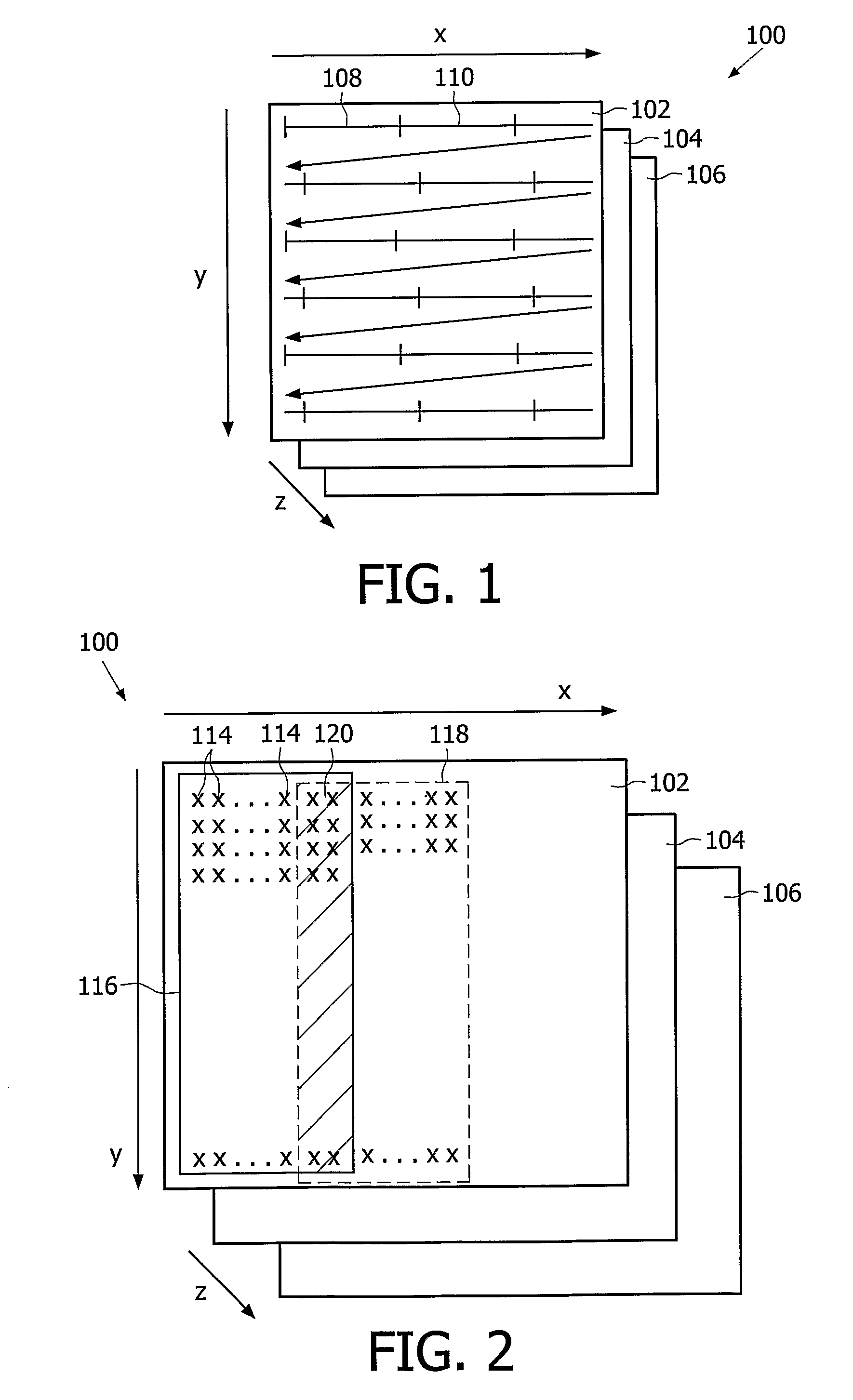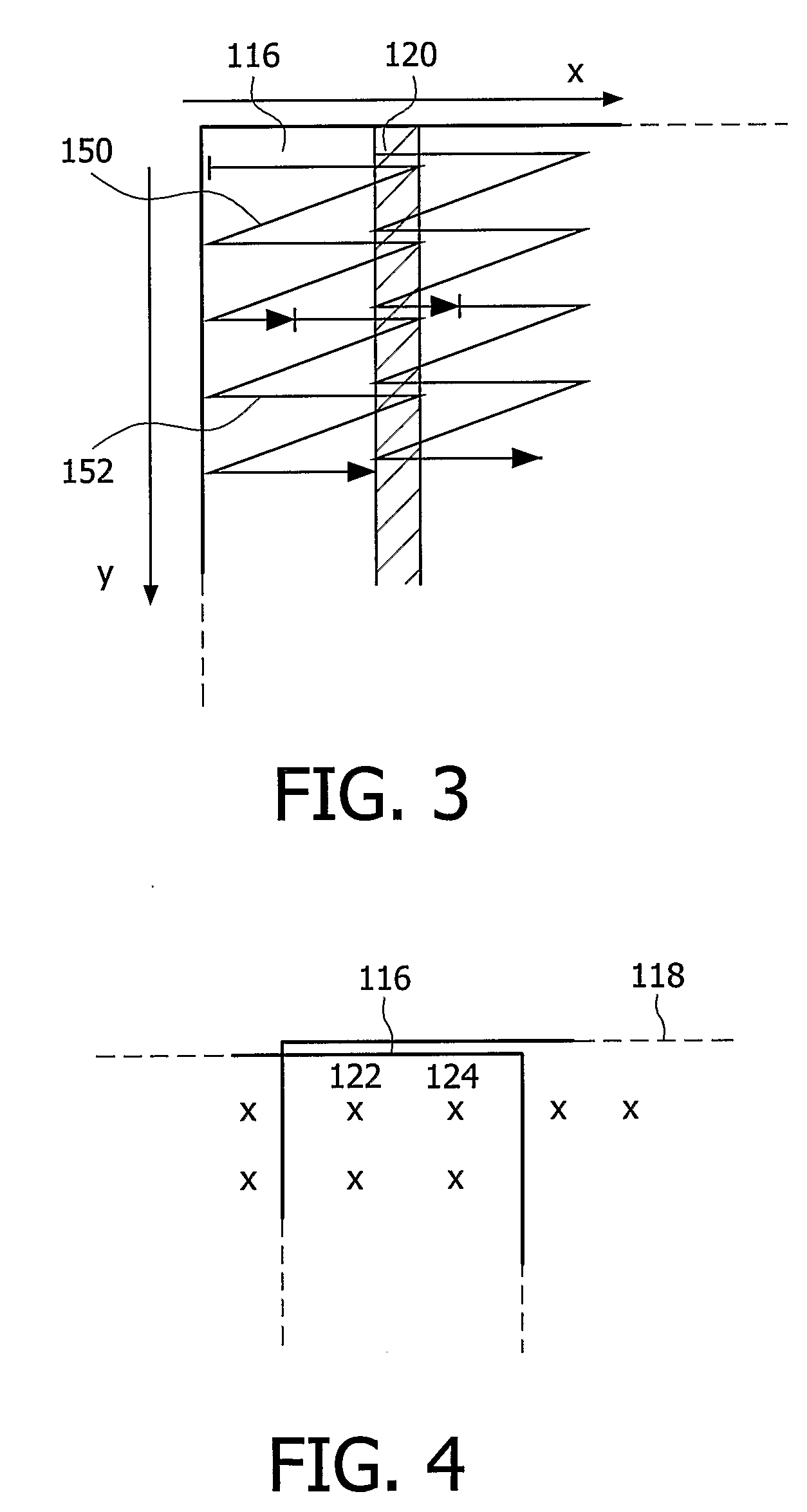Stripe-Based Image Data Storage
a data storage and image technology, applied in image memory management, memory adressing/allocation/relocation, instruments, etc., can solve the problems of large number of data sets that processors treat, slow process to unacceptable levels, and slow data access for the first level cache, so as to reduce the number of data sets, and reduce the overall number of transmitted cachelines
- Summary
- Abstract
- Description
- Claims
- Application Information
AI Technical Summary
Benefits of technology
Problems solved by technology
Method used
Image
Examples
Embodiment Construction
[0017]The invention relates to a way of storing 3D images that optimizes visualization and processing. Although the invention is particularly advantageous in the medical domain, its features are generic enough so that it can be applied to any sort of video application. The invention is based on the concept that 3D images can be represented as a stack of 2D slices. Each 2D slice is treated as a conventional 2D image and is basically composed of an array of columns and rows of pixel data. Pixel data can be colour values, luminance or chrominance values, opacity or reflectivity values depending on the video application and the designer's choice. Each 2D image can be thus graphically represented by a two-dimensional array of points, each point representing a pixel.
[0018]FIG. 1 shows 2D slices 102, 104 and 106 of a 3D image 100. 2D image 102 is represented in the drawing by a square array having six rows of pixel data. Conventionally, pixel data is stored in memory in series, row after r...
PUM
 Login to View More
Login to View More Abstract
Description
Claims
Application Information
 Login to View More
Login to View More - R&D
- Intellectual Property
- Life Sciences
- Materials
- Tech Scout
- Unparalleled Data Quality
- Higher Quality Content
- 60% Fewer Hallucinations
Browse by: Latest US Patents, China's latest patents, Technical Efficacy Thesaurus, Application Domain, Technology Topic, Popular Technical Reports.
© 2025 PatSnap. All rights reserved.Legal|Privacy policy|Modern Slavery Act Transparency Statement|Sitemap|About US| Contact US: help@patsnap.com



